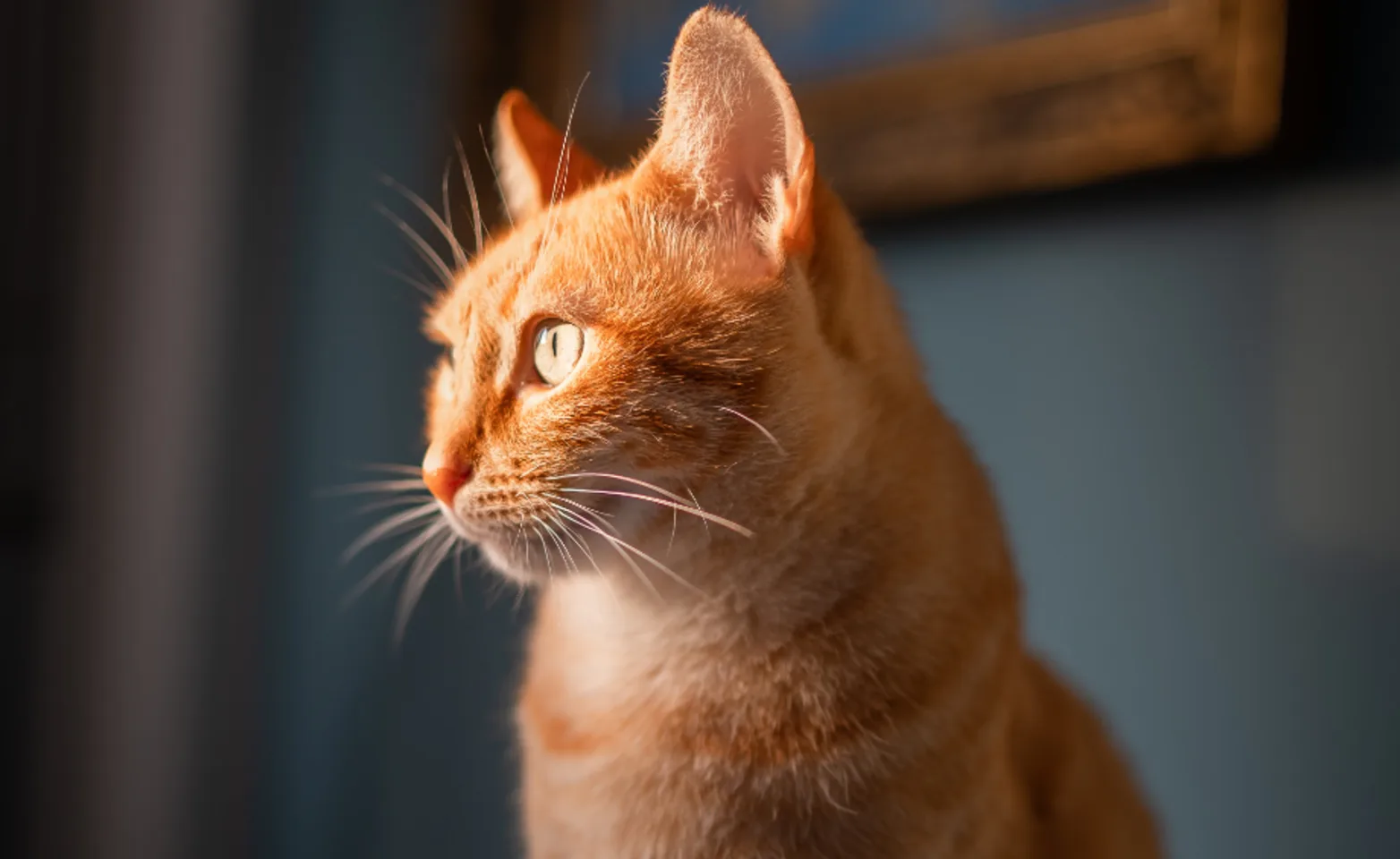Veterinary Vision Animal Eye Specialists

Why is it an emergency?
The accurate diagnosis and appropriate early management of acute primary glaucoma is essential to preserving vision since even several hours of a really high pressure can result in permanent blindness. Though it typically takes longer than that for irreversible blindness to occur, it is common for some vision to be lost forever without prompt treatment.
Diagnosis of Glaucoma
Clinical assessment
There are other potential causes for each of the following signs, but the presence of one or more of them is an indication to perform tonometry.
Mydriasis: Pupil of affected eye larger than that of the fellow eye.
Corneal edema: Cloudy, thickened cornea; in dogs, usually not in cats.
Scleral injection: Large, blood-engorged scleral vessels; also minimal in the cat.
Optic Nerve changes: The optic nerve in the affected eye may look swollen in acute glaucoma, atrophied in chronic glaucoma. However, it may be difficult to perform a good fundic exam due to the corneal edema. Do NOT dilate!
Vision loss: Absence of menace response, dazzle reflex and/or PLR. This can be difficult for clients to appreciate when glaucoma is unilateral, so don’t rely entirely on reported history.
Buphthalmia: Globe enlargement is a sign of chronic glaucoma and is almost always associated with permanent blindness when convincingly present. Don’t waste the time and money doing mannitol if you are sure this is present.
Subluxated Lens: When anterior lens luxation is present this may be the primary problem and indicate that the glaucoma is secondary; however, mild lens subluxation within the poster chamber may be the result of the buphthalmia of chronic primary glaucoma.
Eye Pain: This one is tricky, but as a rule, dogs with rapid and severe elevation of IOP will act painful (seen as squinting, tenderness to touch, avoidance behavior when you near the affected side), while cats in general and dogs with chronic IOP elevation do not act overtly painful in spite of what we believe is a dull, persistent, headache-like pain.
Priorities when examining these patients include:
1.Confirm glaucoma through tonometry.
2. Differentiate those cases which are true emergencies (with the opportunity to preserve vision) from those for which normalizing the IOP is important for comfort reasons.
3. Treat as appropriate based on IOP and whether acute or chronic.
Measurement of IOP (Tonometry)
Normal IOP range for most mammals is 15 mm Hg to 25 mm Hg, though typically elevation of pressure is not subtle in cases of acute canine glaucoma (usually 40 mm Hg or higher). It is a good idea to measure both eyes for comparison. Be careful to avoid pressure on neck and/or lids or the value may be falsely elevated.
We strongly recommend using the TonoPen application tonometer to measure IOP. It is both easy to use, accurate, and reliable. Information on purchase can be obtained through Dan Scott and Associates. The Tono-Vet is a rebound tonometer, which is also a good choice with a proven track record. However, the Schiotz tonometer is associated with a high frequency of inaccurate measurements and is not recommended. The clinical signs of glaucoma should be interpreted as more reliable than Schiotz pressure readings.
Acute vs Chronic
Client history is useful information, but don’t rely on it.
CHRONIC GLAUCOMA: A history of concern about the eye exceeding a week or two’s duration, buphthalmia (globe enlargement), optic nerve atrophy, tapetal hyper-reflectivity, and absence of an indirect PLR are all suggestive of chronicity and indicate a poor prognosis for return of any vision. These patients should be prescribed medications for glaucoma with the goal of relief of their discomfort and examined by an ophthalmologist within a week for further advice and education.
Evaluate pupillary light reflexes carefully. An intact consensual pupillary reflex (light directed into the affected eye causing the opposite pupil to constrict) indicates that the optic nerve is still functional and it may be possible to save vision in this eye. Use a bright light source and dim ambient light for this test.
ACUTE GLAUCOMA: Short duration, normal sized eye, normal to swollen optic nerve head (compare to other eye if normal), and presence of indirect PLR suggest a more acute form of glaucoma, with the possibility of return of vision if addressed quickly. Dogs with only one eye (or with one already blind eye) are the easiest ones to accurately diagnose with acute glaucoma. They are also the patients for whom prompt treatment is the most critical. Since one eye was blind before, these dogs go BLIND when the second eye develops acute IOP elevation and in this case, you can trust the client’s stated duration.
WHAT IF YOU’RE NOT SURE? If you think there may be any chance of saving vision, its better to err on the side of caution. “When in doubt…mannitol.” You are also encouraged to consult one of our veterinary ophthalmologists at 650-551-1115.
Treatment of Glaucoma
Here is a useful reference table of commonly used glaucoma medications, their doses, routes of administration, and caveats. Most of these medications are readily available from a human pharmacy and a prescription can be written if they are unavailable at your hospital.
We strongly recommend every hospital that sees emergencies have mannitol and latanoprost available for in-house treatment of acute glaucoma. It is suggested that all veterinary hospitals stock methazolamide, since this is not easily dispensed through human pharmacies, and at least one topical glaucoma medication (preferably dorzolamide and/or latanoprost).
Treatment of Acute Glaucoma
First, it is essential to evaluate systemic state, hydration, and cardiovascular status. This may bear upon which systemic medications are safe to use. These are suggestions only and your clinical judgment must prevail.
MANNITOL is the mainstay of acute glaucoma therapy in veterinary medicine.
Place an IV catheter and administer mannitol slowly IV at a dose of 1 g/ kg. (For 25% mannitol, a good rule of thumb is is 4ml/kg or 2 ml/lb).
Wait 15 minutes after completion and recheck IOP. If still high and lungs clear, repeat same dose.
LATANOPROST & OTHER GLAUCOMA MEDS:
The topical glaucoma medication latanoprost can be very useful for treatment of acute glaucoma crises.
If you have it available, you may want to try it first. If ineffective within 20 minutes, move on to mannitol.
Latanaprost causes miosis and so its use is contraindicated in cases of anterior lens luxation.
There is no reason not to also administer any other available glaucoma medications while you are waiting for mannitol and/or latanaprost to take effect.
Methazolamide may be given once orally at 2 mg/lb and dorzolamide (or brinzolamide) and latanaprost are safe to give repeatedly at intervals of 10 minutes.
ANTI-INFLAMMATORIES:
Many cases of even primary glaucoma have a substantial inflammatory component.
Though less critical than pressure lowering medications, anti-inflammatory therapy is suggested.
An IV steroid (if not contraindicated by systemic illnesses like diabetes) and topical steroids (if not contraindicated by corneal ulceration) are most effective.
WHAT IF THE IOP IS STILL HIGH?
Call Veterinary Vision at (650) 551-1115 for assistance. If needed, our voicemail system will instruct you how to leave a message for the ophthalmologist on duty for after-hour emergencies.
Important Additional Tips
It is important that these pets see us the next day if at all possible. Please ask clients to call us at (650) 551-1115 at 8:15 the next morning for a work-in appointment. They should reference acute glaucoma treated the night before on ER basis. They do not need to call the ER line for this!
Please leave the IV catheter in place in case we need it next day.
It is critical that some glaucoma medications be prescribed for immediate use at home (or all your effort may be wasted).
Mannitol works through dehydration so it is important that you NOT administer IV crystalloids at the same time or after IV mannitol and that clients be warned to reintroduce water only very gradually at home. Otherwise, the IOP will rise again dramatically before the at-home medications kick in.
The owner should be prepared for the fact that medical management alone is usually not sufficient in managing glaucoma on a long-term basis. Surgery is often necessary and a veterinary ophthalmologist can discuss these options.
At Home Treatment for Glaucoma
Medical treatment for glaucoma at home is important for both acute and chronic glaucoma. It is critical that patients you have treated in hospital for acute glaucoma be sent with medications unless you have arranged for client to pick up pet from you and transfer directly to us. These medications are generally available from a human pharmacy and a prescription can be written if they are unavailable at your hospital.
See the table above for other options and dosages, but here is one good protocol for initial at-home glaucoma treatment of a typically affected DOG patient.
Methazolamide at 1mg/lb PO BID
Latanoprost 1 gt to affected eye SID to TID depending on severity (NOTE: this medication is contraindicated if there is an anterior lens luxation
Dorzolamide: 1gt to affected eye TID
NeoPolyDex or Dex SP or Prednisolone acetate: 1gt to affected eye TID
Here is a good initial protocol for a CAT with glaucoma. (**Side note: Cats rarely get primary glaucoma and therefore rarely is their glaucoma acute. Therefore, this is often the place to start for them.**)
Dorzolamide: 1 gt to affected eye TID
Timolol: 1 gt to affected eye BID
OR the combination drop dorzolamide-timolol (brand name: Cosopt) at BID to replace both of above
Prednisolone acetate or Dex SP drops: 1 gt to affected eye BID
